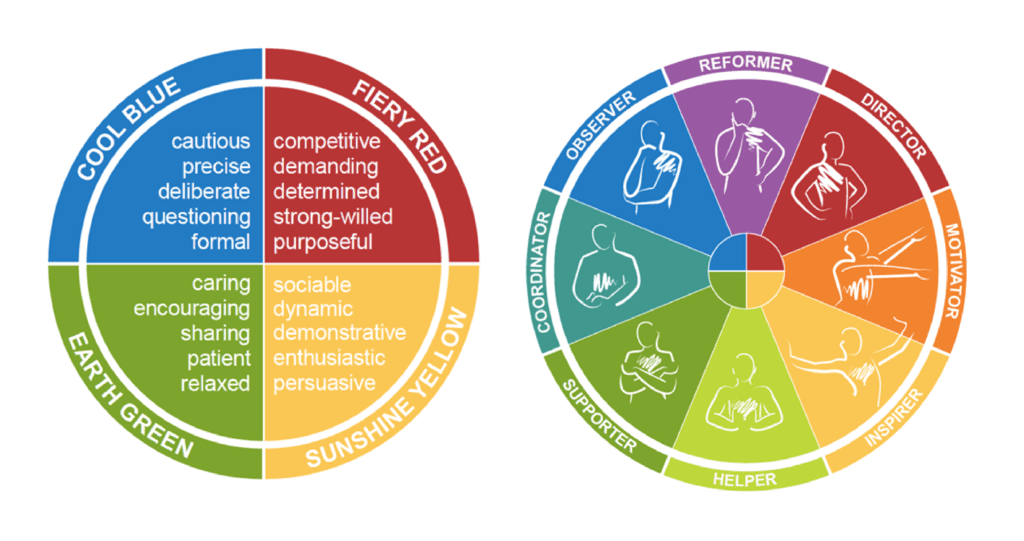Getting change management buy-in is not easy, but we’re only delaying the inescapable when we resist change. Whether it’s driven by economics, technology, politics, or the environment—those massive undercurrents can at best be held at bay before reality sets in.
Most organizations are resistant to change by default. Inertia, process, bureaucracy, and governance are often cited as the primary hurdles. But fear and uncertainty also play an often unspoken-yet-prominent role. The bigger the company, the harder it can be to make even the smallest fundamental shifts.
Yet, those same large organizations face the most risk by not adapting quickly and intentionally. Smaller, younger firms are by nature more agile, and it’s easier to get change buy-in. But small teams also have less to lose. It’s because larger, older companies have so much more at stake that failing to change can be that much more consequential.
For example, my mission in my previous role at a company with over 30,000+ employees was to create a formal change management process or track record to lean on for their CRM system, Salesforce.com, and create a center of excellence around optimizing the firm’s usage of this critical tool.
This wasn’t my first time helping an organization improve its Salesforce.com utilization. I’ve done this for multiple firms from a project management/PMO perspective. I’ve also had experience in change management, having spent eight years previously facilitating those.
Let’s look at the critical steps that can affect the fate of significant transformations for organizations and successfully change management buy-in.
3 Critical Considerations That Affect Change Management Buy-in
1. Intentional thinking from the start.
One fatal flaw many big change initiatives make is letting things “into the wild” before they’re fully baked. However, there might be a follow-on phase to tweak and tailor new tools and processes to the specific impacted groups. Employees won’t always wait until the paint is dry to begin using things.
I’ll use Slack as an example. The asynchronous communication tool can be a huge boost for efficiency and collaboration. But when left to their own devices, early adopters can create some bad precedents.
In this case, if you don’t create the correct channels and train staff how to use Slack properly, it can get out of control. This can both create bad habits and turn people off to the tool before it’s spun up. Yet, a productivity boon can end up as yet another system people use inconsistently.
2. Anticipating downstream ramifications.
Management often initiates changes. A CFO, VP, or a Director thinks there’s a better, cheaper, or faster way to do something. Then they issue an order, and everyone beneath them in the organizational chart deals with the consequences.
But managing change by edict is often a recipe for disaster on the ground floor. Executives frequently don’t have much insight into the day-to-day operations of various teams. Thus they can’t begin to recognize the disruption such a shift might cause.
The power of working groups is effective. People on the ground are the ones that know what’s going on.
Ideally, before a suggested change is even approved, the organization conducts a full forensic analysis of the implications for everyone impacted. That includes employees across the company, as well as strategic partners and even customers. The exercise might uncover potential unintended consequences.
Regardless of how big or small it might be, every change requires a proper communication plan. The key is figuring out how you’re going to engage with everyone, drive adoption, detail the benefits, and get everyone on board.
It should detail the rationale for the move along with any new or modified processes. If necessary, hold training or Q&A sessions to ensure the roll-out goes smoothly with minimal turmoil during the transition.
3. Centralized change management.
Another key to successful change management is running it all out of a single unit, be it an ad hoc team, a more permanent center of excellence, or a formal PMO. There are many benefits from this kind of organizational structure.
First, it breaks down silos in a way that’s often unattainable organically. This unit can both communicate across the organizational matrix and identify redundant efforts.
This also puts trained practitioners in charge of structuring and facilitating these activities. Since this is what they do, they have the skills, tools, best practices, and resources to make things as seamless and standardized as possible. They also possess the institutional knowledge and expertise to anticipate friction points in advance thus minimizing potential damage via education and well-documented processes.
Most importantly, utilizing a dedicated change management entity gives a holistic view of every major initiative. Regardless of where it began, keep in mind the entire organization and larger ecosystem during execution.

4 Steps to Achieve Change Management Buy-in
These are the steps for starting things off on the right foot.
1. Survey the landscape.
Until you’re on the inside, it’s hard to know who the real players are. Nor do you know where the power centers lie and which baggage and political legacies influence projects. You see which names are being dropped, who people defer to, who made previous critical decisions or threw up roadblocks.
At one point, I conducted 40 interviews across various groups to get the land lay but could have done more. Once I’ve identified these stakeholders, then I can understand how to best engage with them.
I want to emphasize that it’s imperative to make sure you get things right when evaluating senior management. You need to know their motivations, concerns, and what they value most.
Emotional intelligence is such a key factor as a leader. You can talk about industry knowledge and business process. Still, if you don’t have the emotional intelligence of people around you and their drivers, then you can’t figure out how to motivate them in the best way.
Additionally, not everyone wants to receive information in the same way, nor do we all process it similarly. I make a point of asking key stakeholders right off the bet how they like to be communicated with, so I can try and meet them where they want to be.
2. Define and articulate a vision.
No one’s a fan of change for change’s sake, so the value and purpose of this new role must be crisp, clear, and concise. From the C-suite to the cubicles, everyone should understand why this is important, the steps required, and which benefits the result will bring.
Ideally, present tailored messaging for different audiences to connect with their pain points and address their concerns. But to do this, you need to know who you’re dealing with.
I use the Insights method. To follow this method, first place stakeholders along a color spectrum, and then based on that designation, you can see what triggers stress along with the best ways to remedy that state. I do this to create the best chances for a successful interaction by acknowledging their feelings and speaking to them constructively.
It’s also critical to not immediately dive into the details but rather to establish broader themes that the change will encompass. These themes might seem obvious at times, but a smart and accurate tagline for the initiative can become a helpful mantra and reference point for the project’s life.
3. Get change-buy in with a roadmap.
Significant changes have a lot of moving pieces and dependencies. To get change buy-in, a project or program roadmap can help illustrate exactly how everything will happen. Using a purpose-built roadmapping tool is the answer to keeping everything organized and a clear vision to stakeholders.
Using ProductPlan, I capture every possible backlog item to ensure no requests or requirements get lost in the shuffle. In this central repository, we used ProductPlan to prioritize initiatives. I categorize various things up for consideration before putting them into “buckets” to develop and ship together to create incremental value associated with a particular theme.
Then I use a cost and complexity versus impact method for evaluating which items should get to the front of the line, and are happy to slot the low-hanging fruit in the front of the queue to deliver more value to stakeholders faster.
With prioritized themes set, I build my roadmap. I use lanes for “containers” of specific items, which allows me to keep the roadmap clean and straightforward. Less is more about the level of detail presented to most audiences, but there’s always the option to drill down and get more refined information on a specific roadmap element.
4. It’s all about people.
While tools, frameworks, and processes get a lot of attention, at the end of the day, what determines a significant change’s success or failure is how it is embraced and supported by the individual it impacts.
The key to change management buy-in is having a clear vision and structure people understand so they see the impact of what you’re trying to do and how it affects them. If you don’t think about how they’re going to go about it, it will never be successful. Without engaging with the people who will use it, that will be your number one failure.





